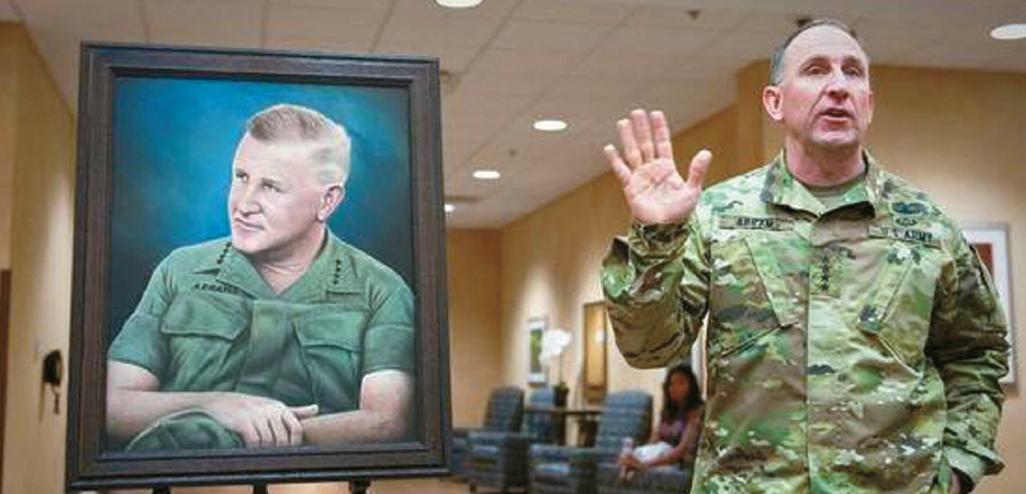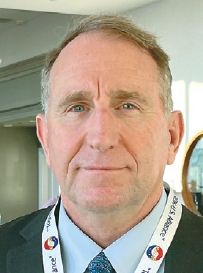The Abrams family is one of the most distinguished military dynasties in U.S. history, producing three four-star generals and one brigadier general—a total of 13 stars among father and sons.

General Creighton Abrams, the 26th Chief of Staff of the U.S. Army, served in World War II, the Korean War, and the Vietnam War, earning a legendary reputation among American military leaders. The U.S. Army’s main battle tank, the M1 Abrams, was named in his honor.
His eldest son, Creighton Abrams III, and second son, John Abrams, both retired as generals—Creighton as a brigadier general and John as a four-star general. The youngest son, Robert Abrams, also rose to the rank of four-star general and later served as Commander of U.S. Forces Korea (USFK).
From November 2018 to July 2021, General Robert Abrams held three concurrent posts—Commander of USFK, Commander of the ROK-U.S. Combined Forces Command, and Commander of the United Nations Command in Korea. Today, he serves as Chairman of the Korea Defense Veterans Association (KDVA), advocating for a stronger U.S.–Korea alliance and greater public awareness of its importance.
During an exclusive interview with The Korea Daily at the KDVA Annual Meeting held in San Diego on October 25, General Abrams identified China as “the greatest current threat on the Korean Peninsula.” He warned that Beijing’s military activities near the peninsula have grown increasingly aggressive, emphasizing that “South Korea must plan its defense strategy with the assumption that China will intervene in any future conflict.”
“Our family was inseparable from the military.”
“Our family was deeply tied to the military,” Abrams said. “I was the youngest of six siblings. Two of my brothers were generals, and all three of my sisters married military officers. Most of my father’s friends were soldiers, and their children also served. At the time, I didn’t think of it as anything unusual—it was simply our way of life.”
“I didn’t plan to become a soldier.”
“No one in my family pressured or expected me to join the military,” he recalled. “When I was in high school, I spent two weeks at my brother’s U.S. Army base in Germany. The physical work and teamwork suited my personality. That experience made me think, ‘If I become a soldier, I want to be an officer who builds a better organization.’ So I entered West Point. Becoming a general was never my goal; I simply wanted to be a good battalion commander.”
On the 9.19 Inter-Korean Military Agreement
“When I arrived in Korea in 2018, the September 19 Inter-Korean Military Agreement had just been signed,” he said. “The year before was marked by ‘fire and fury,’ with North Korea testing ICBMs and nuclear weapons. The PyeongChang Olympics opened a window for diplomacy between the two Koreas and between the U.S. and North Korea. The 9·19 agreement was part of those de-escalation efforts—but it posed challenges for the U.S.–ROK combined defense posture.”
“For example, the Joint Security Area (JSA) falls under the jurisdiction of the United Nations Command, so the two Koreas could not unilaterally pursue disarmament there. North Korea wanted the UNC removed, but the United States firmly opposed it.”
“China’s military activity is growing more aggressive.”
“I’m increasingly concerned about the growing aggressiveness of China’s military operations around the Korean Peninsula,” Abrams said. “The Chinese maritime structures in the Yellow Sea are unclear—no one knows who operates them. The frequency of Chinese naval transits through the Yellow Sea and adjacent international waters has surged, as has the number of Chinese aircraft entering Korea’s Air Defense Identification Zone (KADIZ). These developments could be linked not only to Taiwan but also to potential operations on the peninsula.”
On the U.S.–ROK naval response
“I agree with the criticism that the U.S. and ROK navies have not responded adequately,” he said. “But such issues cannot be solved solely by military commanders. The South Korean government should raise them formally with Beijing, and the matter should be addressed within the U.S.–ROK alliance framework. At the same time, the ROK Navy should take a more proactive stance—similar to how the Philippines has responded to China in the South China Sea.”
“Troop numbers aren’t everything.”
“We shouldn’t fixate on the number 28,500,” Abrams said, referring to the official U.S. troop level in Korea. “What matters is capability, not headcount. As threats evolve, so must our force structure and capabilities. Depending on what’s needed, troop levels could go up—or down.”
“The main threat is China, not North Korea.”
“China is the real concern,” he emphasized. “North Korea is modernizing its military but remains defensive in nature. While its nuclear and ICBM tests are troubling, there are no signs of an imminent surprise attack.”
On South Korea’s operational planning against China
“I can’t discuss the classified details,” Abrams said, “but any Korean War contingency plan must assume the possibility of third-party intervention. China and North Korea still maintain a mutual defense treaty signed in 1961, and it’s renewed every five years. If war were to break out again on the peninsula, the question would not be whether China would intervene, but when. That’s why the ROK-U.S. Combined Forces Command must prepare on the assumption that Chinese involvement is inevitable.”
☞ About Robert B. Abrams:

Born in 1960 in what was then West Germany, Robert B. Abrams graduated from the United States Military Academy in 1982 and was commissioned as an armor officer. He served in the Gulf War, the Iraq War, and the U.S.–Afghanistan War, commanding troops in Saudi Arabia, Iraq, Kuwait, and Afghanistan.
Over his distinguished four-decade career, Abrams held key leadership posts such as Commander of the National Training Center, Commander of the 3rd Infantry Division, and Military Assistant to Defense Secretary Chuck Hagel while serving as a lieutenant general.
After retiring from active duty in 2021, he settled in Missouri with his wife Connie, continuing to advocate for U.S. veterans and for strengthening the U.S.–ROK alliance as Chairman of the KDVA.
BY KYEONGJUN KIM [kim.kyeongjun1@koreadaily.com]

![Ex-South Korean President Accused of Trying to Trigger North Korean Attack Former President Yoon Suk Yeol leaves the Seoul Central District Court in southern Seoul after the pretrial detention hearing on July 9. [JOINT PRESS CORPS]](https://www.koreadailyus.com/wp-content/uploads/2025/07/0710-Yoon-100x70.jpg)


